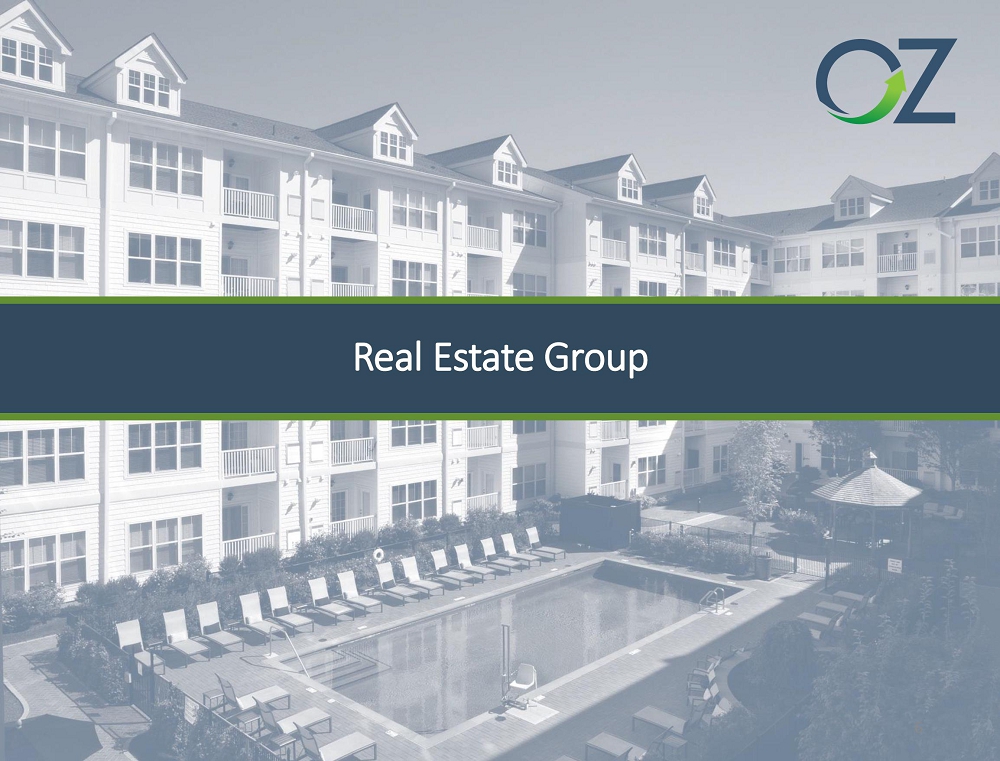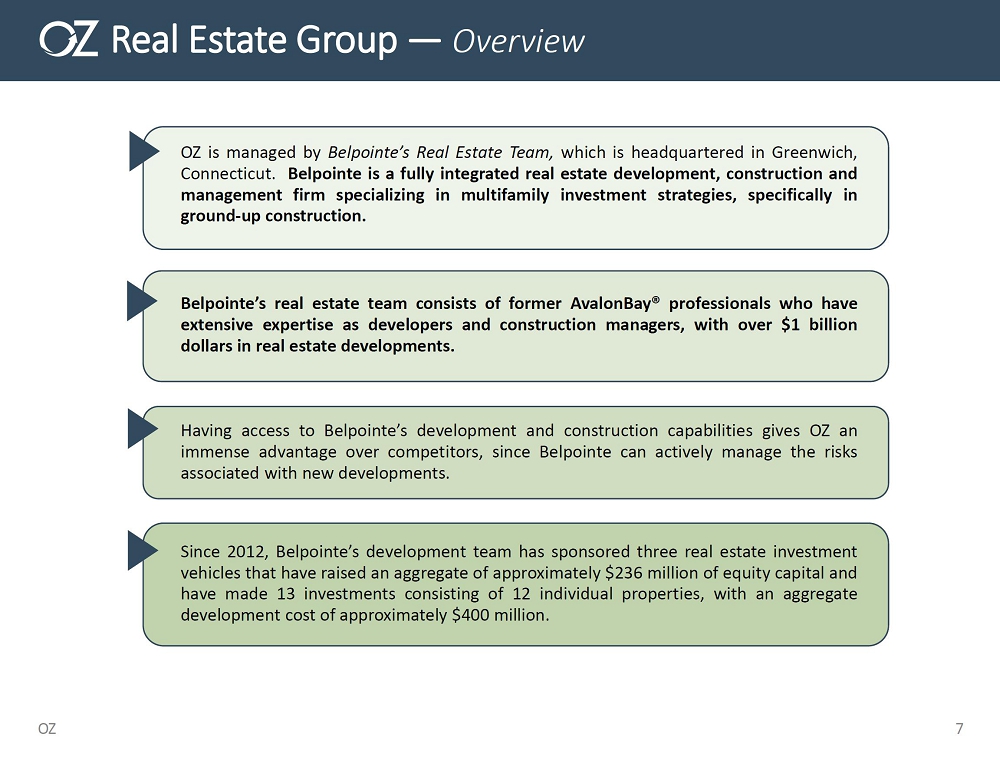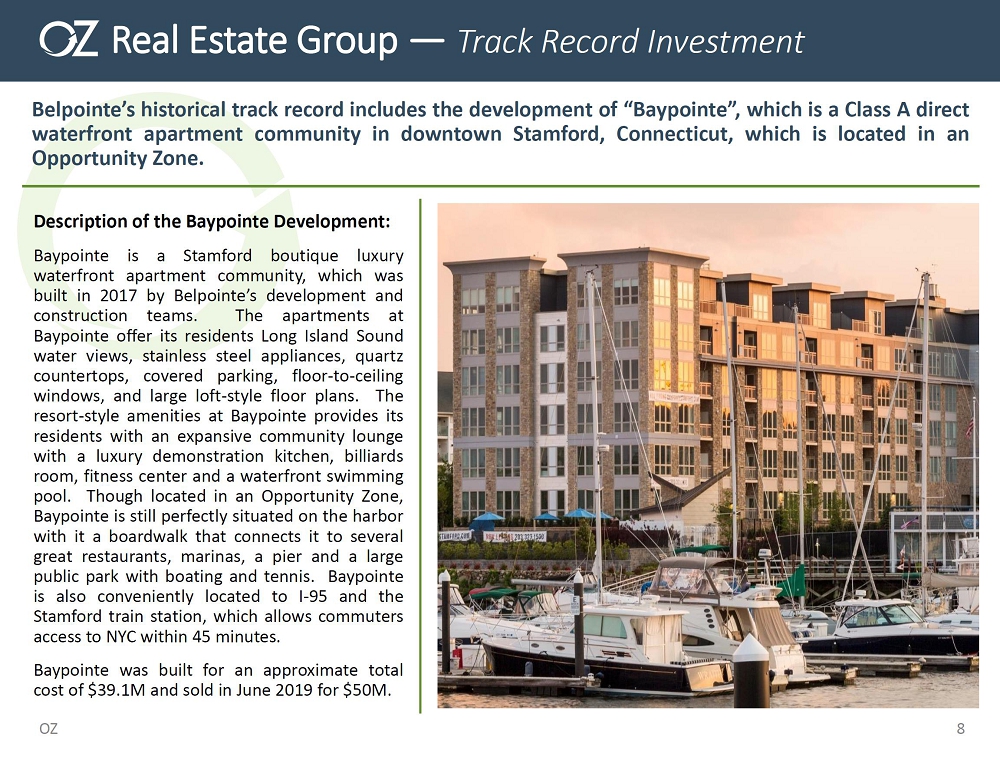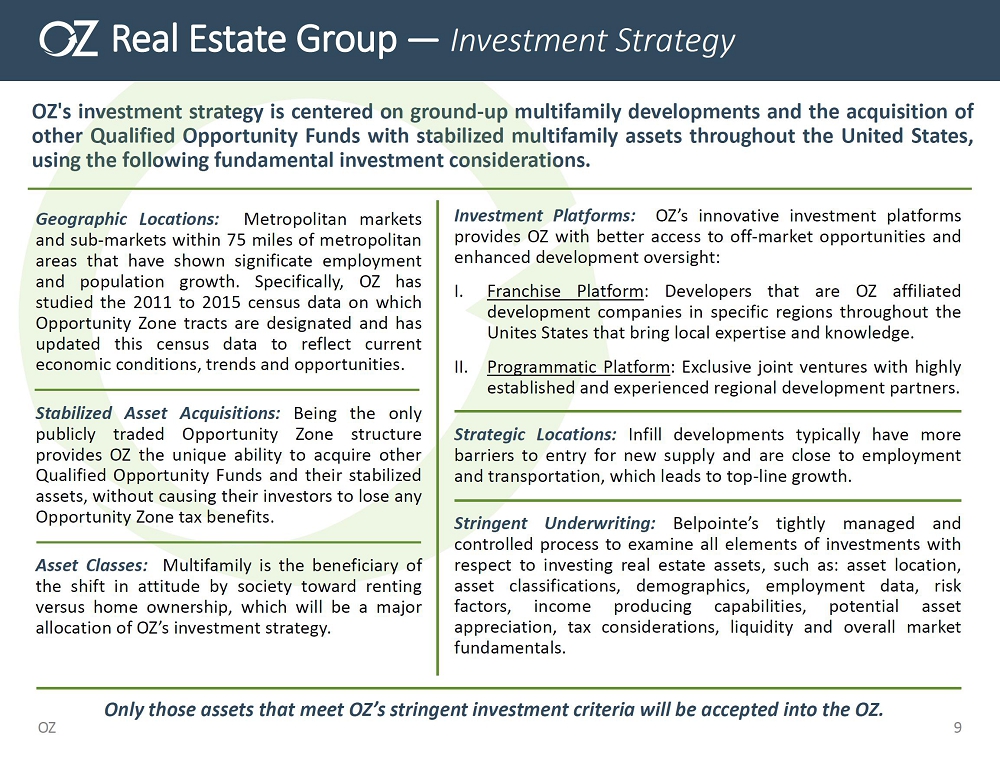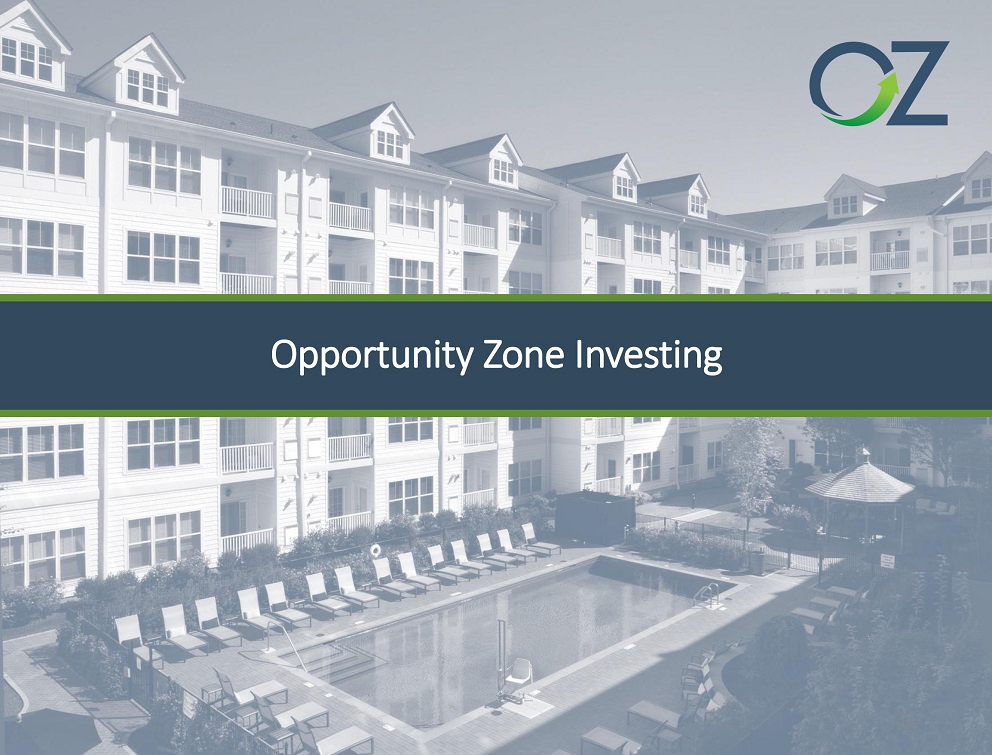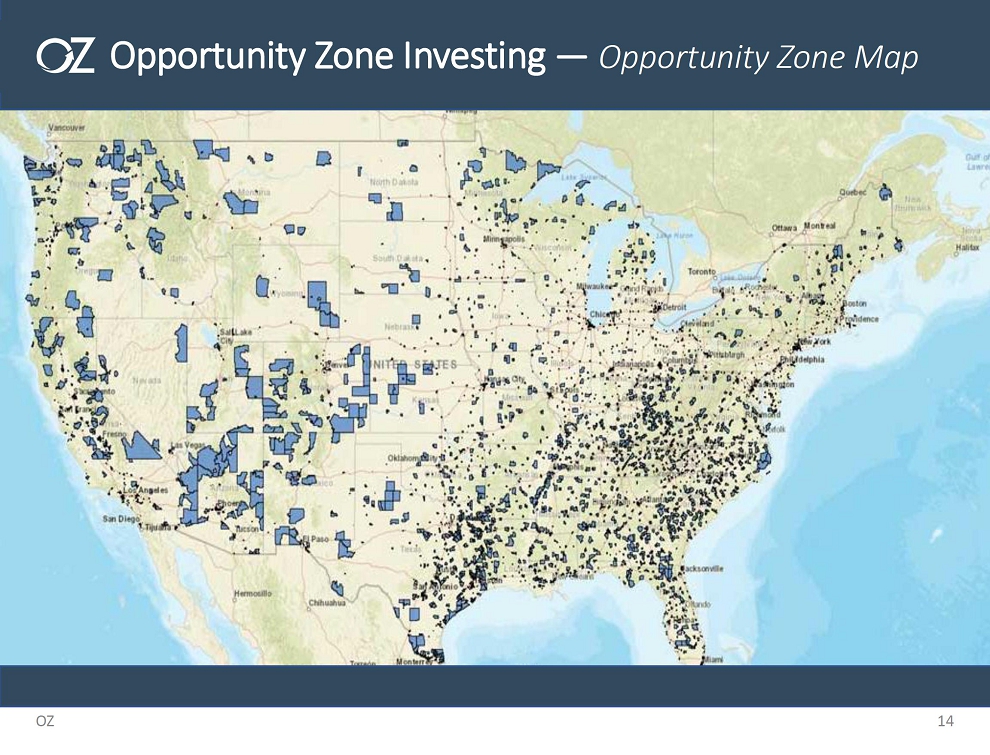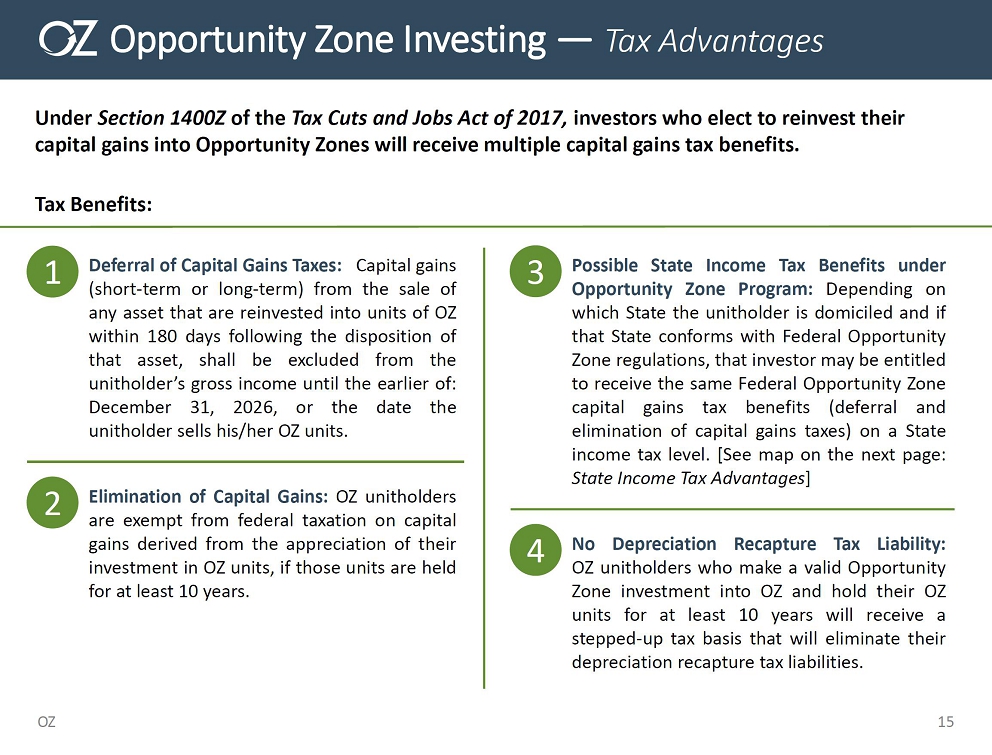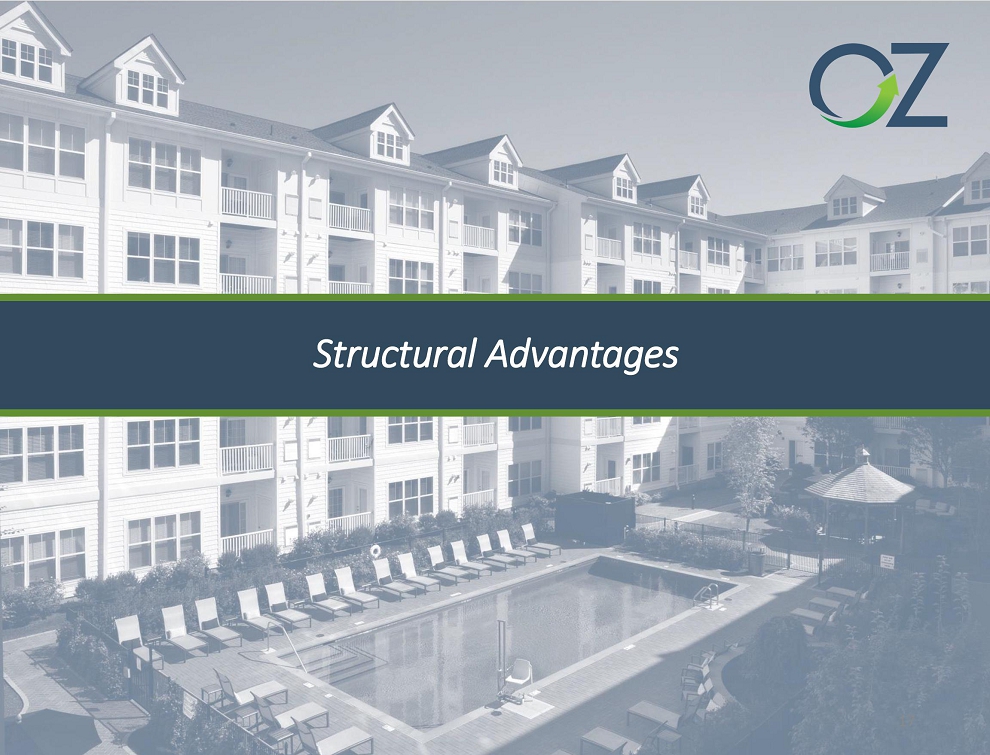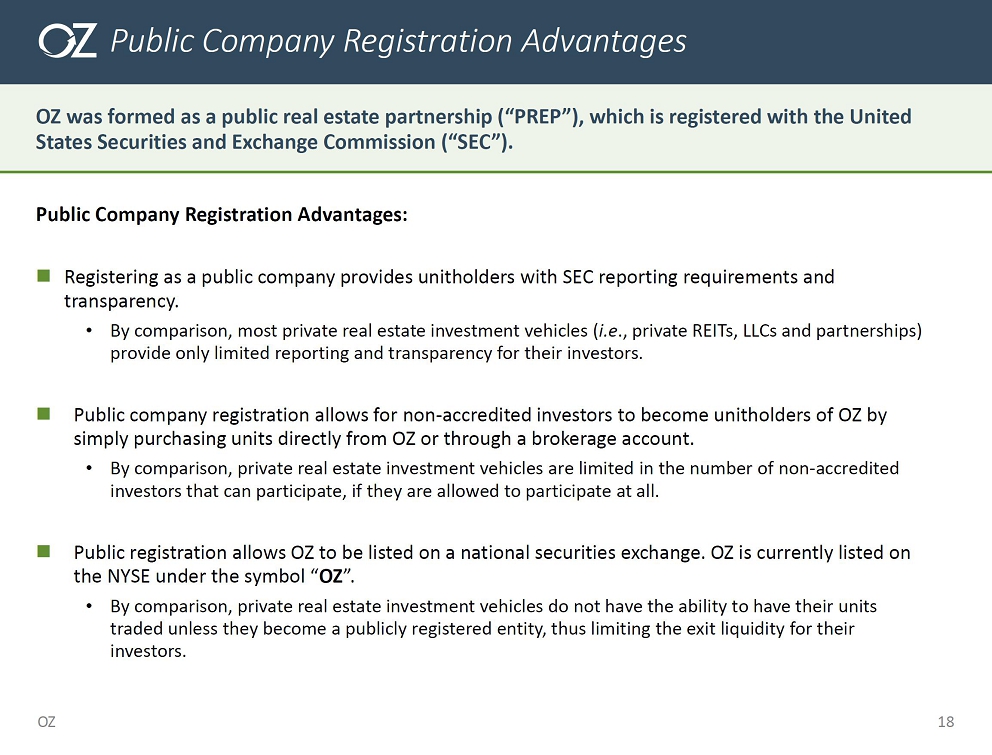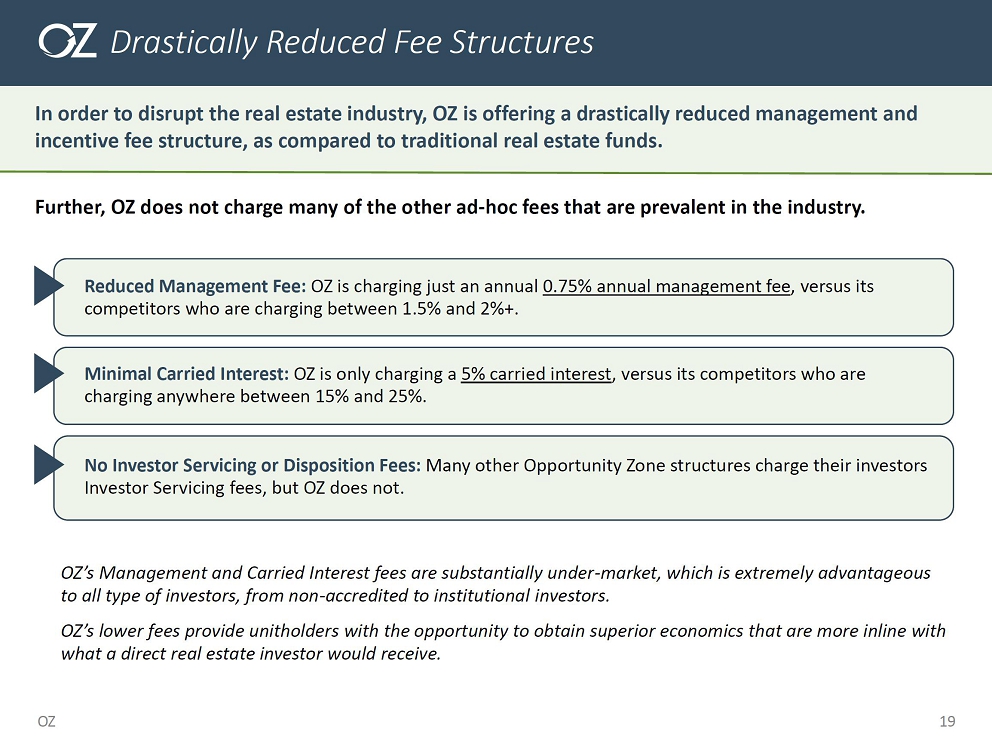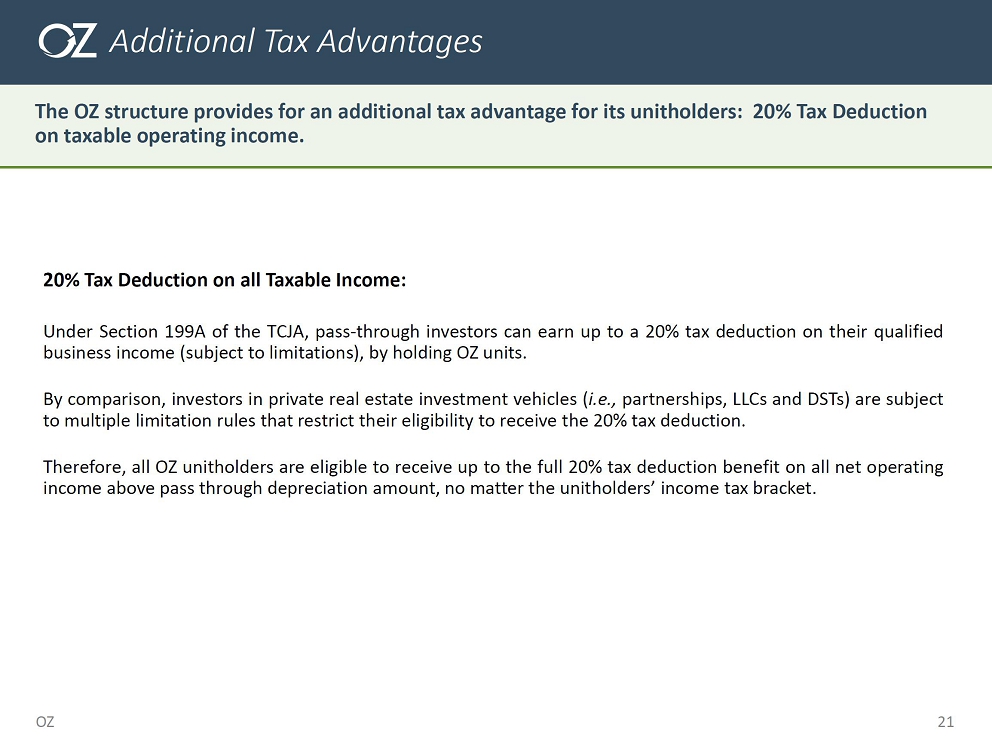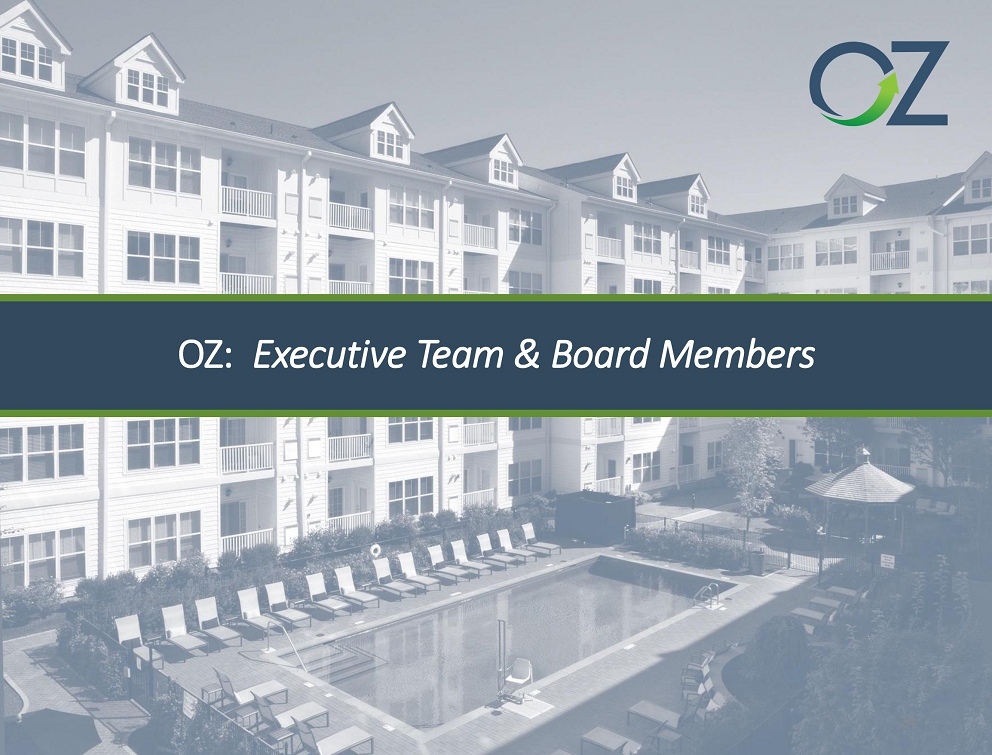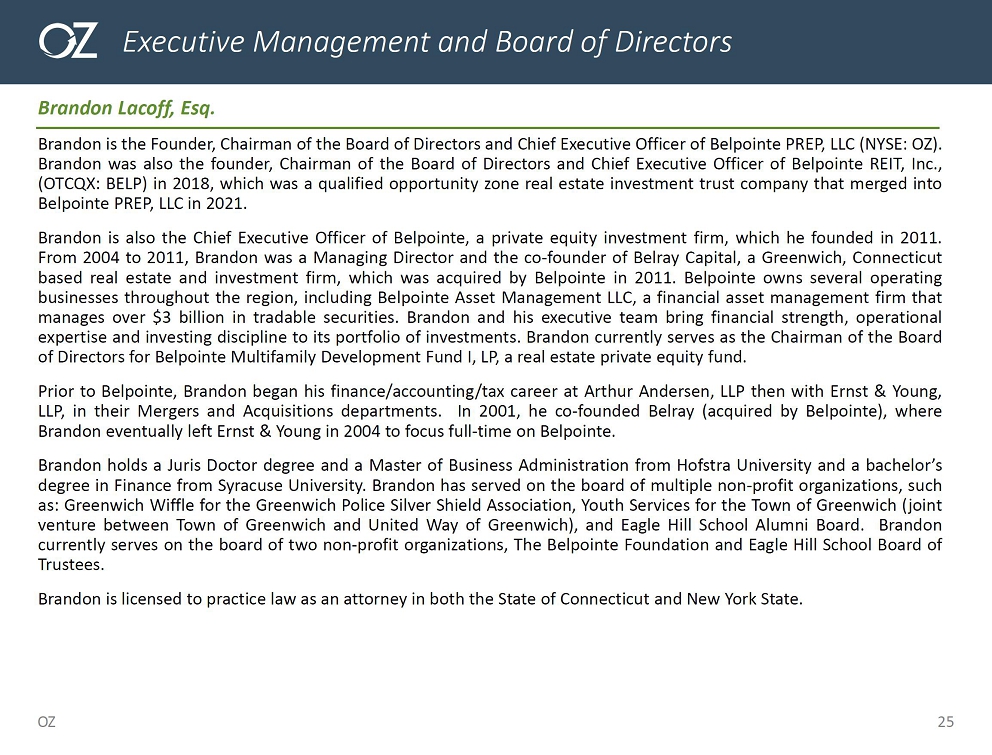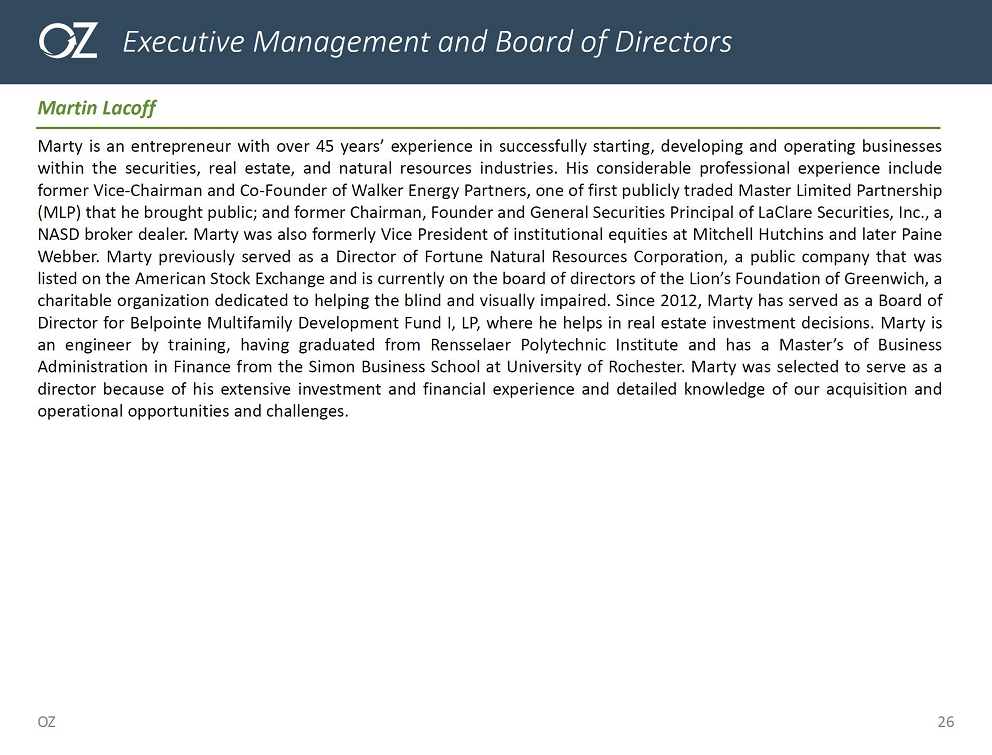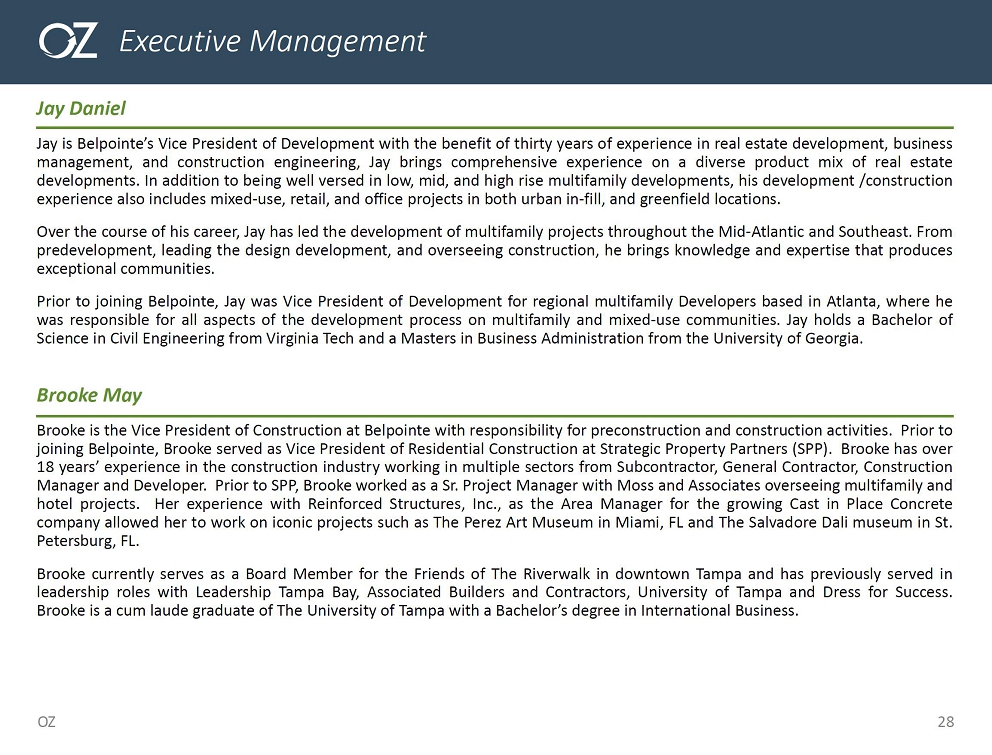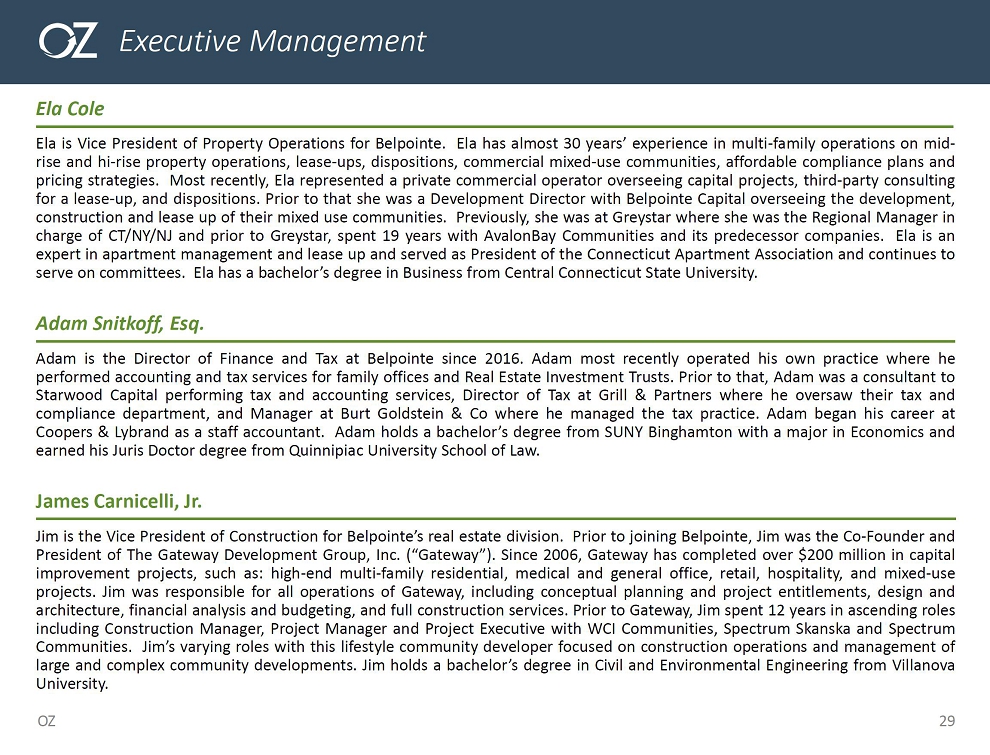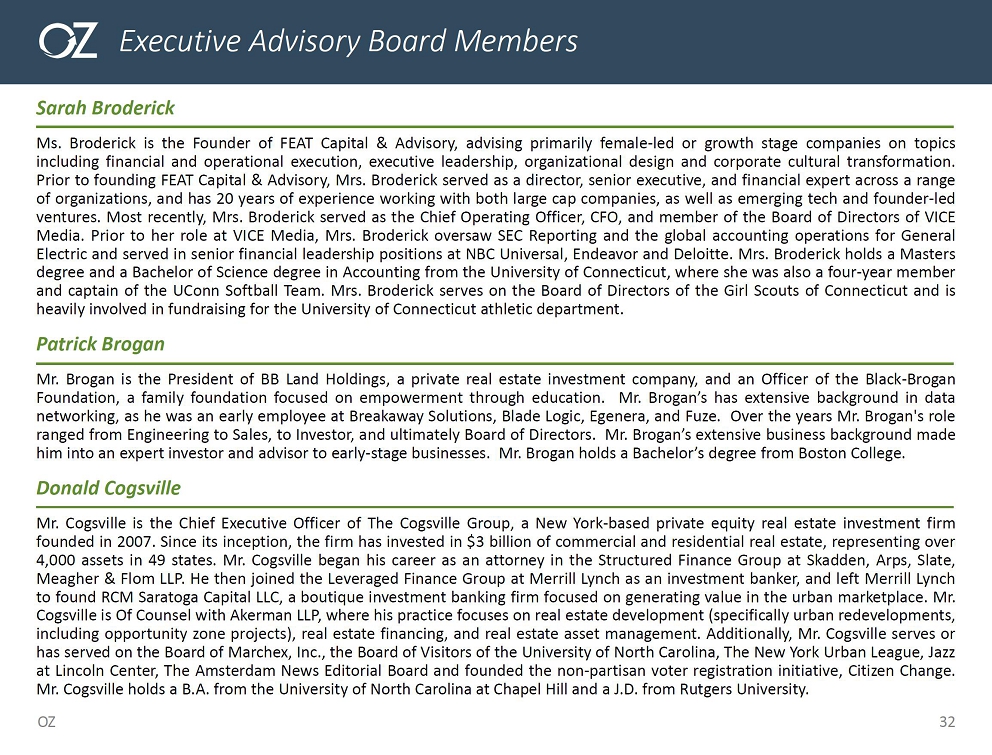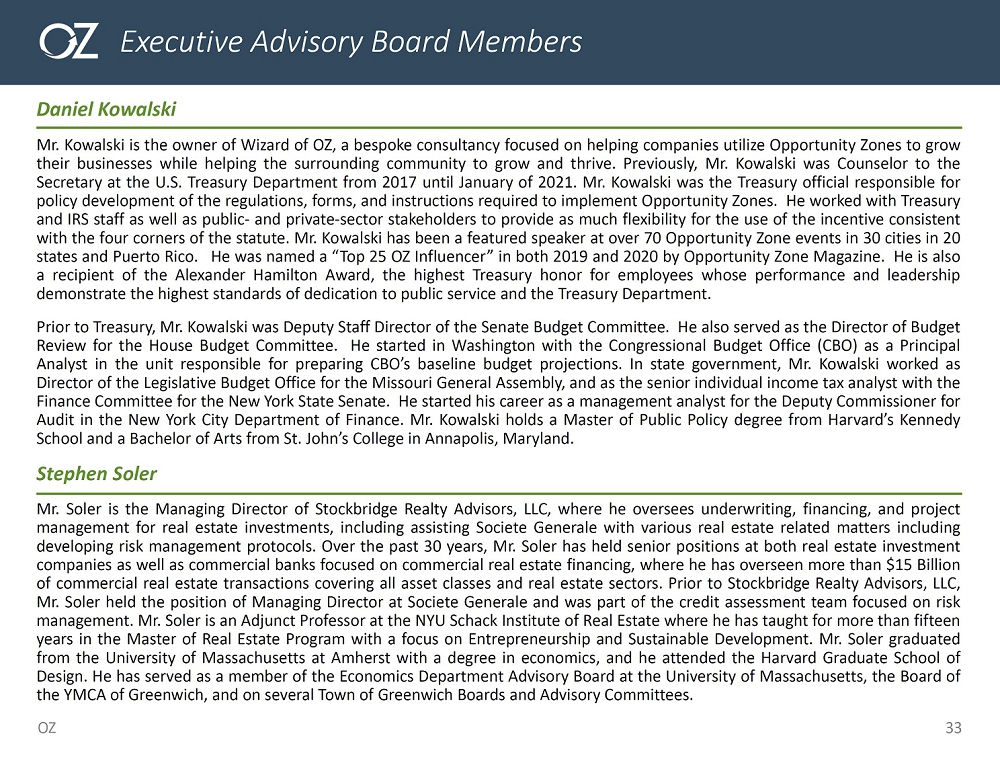Issuer Free Writing Prospectus dated March 24, 2022
Filed Pursuant To Rule 433
Registration No. 333-255424
[Transcript of CPA Academy Webinar: Defer your 2021 Capital Gains Tax, Publicly Traded Opportunity Zones from March 24, 2022]
Moderator: Hello everyone, and welcome to CPA Academy. My name is Chris and I will be your moderator today. Today’s webinar is titled, “Defer your 2021 Capital Gains Tax, Publicly Traded Opportunity Zones.” Today’s presenters are Brandon and Cody. Before we really get started today folks, please go to your questions panel on doc.panel and let me know that you can see me and also see the first line up on the board here as well. And also let me know where you guys are from, we’d like to know where on planet earth you guys are located. I want to check that box now and check my questions in that area here. Thank you Jasmine for that.
Okay, I don’t see anyone had any difficulties in technical area. If you have any questions or issues, by all means go back to this area here and list any issue that you may have and I’ll do my best to get back to you guys as soon as possible. And another housekeeping issue that we wanted to go over today is your CPE. This webinar qualifies for one CPE or one CE credit. The way you guys are going to earn that today is spend 50 minutes with us for the allotted amount of time, and answer three of the four poll questions. Your CPE today will be issued at the end of the day as well as any other available materials for this particular course. And if everyone is ready to get going, we’re going to get started with our very first presenter, please welcome Cody. Cody, the floor is yours.
Cody Laidlaw: Perfect, thanks very much. So good afternoon everybody, and thank you for attending our webinar. Before I pass it over to Brandon Lacoff, who’s the CEO of Belpointe, I just have to read this quick disclaimer, so bear with us. Today’s presentation may include statements that are forward-looking statements within the meeting of the federal securities laws. Any forward-looking statements expressed at this webinar are made in good faith, and we believe there’s a reasonable basis for them. However, there are a number of risks, uncertainties and other important factors, many of which are difficult or impossible to predict that could cause actual results to vary materially from the forward-looking statements expressed in this webinar. Except as otherwise required by law, we will not update or revise any forward-looking statements to reflect subsequent events. Belpointe PREP has filed a registration statement with the SEC for the offer and sale of the $750 million worth of its class A units. Investing in Belpointe PREP’s class A units involves a high degree of risk, including a complete loss of your investment. You should read Belpointe PREP’s most recent prospectus and the other documents that it has filed with the SEC for more complete information about Belpointe PREP and its offering. Prior to making an investment decision, you should carefully consider Belpointe PREP’s investment objectives, strategy, risk factors, fees and expenses, and any tax consequences that may result from an investment in Belpointe PREP’s class A units. You can obtain a copy of Belpointe PREP’s prospectus and other filings on the SEC’s website, on our website at belpointeoz.com, or by contacting me at the phone number or email address that is included in today’s presentation materials. With that, I turn it over to our CEO, Brandon Lacoff.
Brandon Lacoff: Thank you, Cody. So it looks like we have a great turn out today. I hope everybody’s doing well. Just want to take a moment and just talk a little bit about Belpointe, then get into the basics of opportunity zone and give a little highlight because some people are new to opportunity zones, and then get into the more detailed stuff, talking about what Belpointe’s doing and how we provide liquidity for our shareholders and differences of what we’re doing in the marketplace. And then we’ll talk about some of the investments we’ve already made, and then also talk about, and then at the end, we’ll leave some time for questions. So if anybody has any questions in the next 45 minutes, put that in the question box, and we’re going to get through as many questions as we can. If we miss, if we weren’t able to get to your question, Cody will answer your question post the seminar or webinar, and we’ll definitely get your answer to you in the next couple of days.
So a little background on Belpointe. We’re headquartered in Greenwich, Connecticut. We have offices around the country. Our construction office is actually down in Sarasota, Florida, so we’re a nation-wide firm, fully integrated, multi-family company that’s really from pre-development all the way to overseeing property management. As of now, we don’t manage our own properties ourselves, we use third-party managers, but we have our own in-house staff that oversees the property managers because you’re only as good as the people that you hire. So we want to make sure we manage that from headquarters. Something that really separates ourselves, we’re going to really talk about this later in the conversation, is our background and our former AvalonBay professionals that were formally at Avalon and are now with our company, and they’ve been with our company for over 11 years, so a lot of experience there, and we’re going to get into detail why that’s so important later in the conversation. The other big, I think, important factor to our construction and development experience is our past experience in the last 10 years with our AvalonBay team, and actually it’s been a little bit more than 11 years now that we’ve put out over $236 million of equity, in our last funds, 91% of our investments were in opportunity zones. Unfortunately, we didn’t get the tax benefits because we made those investments before the regulations was enacted, and so that was before January of 2018. So we have a track record in opportunity zones, and we’re going to show an example of that later today, but the experience is there, and we have the track record in opportunity zones, and like I said, the last 91% of our investments were in opportunity zones, even though we didn’t get the tax benefits, we’ve been investing in opportunity zones for decades.
So let’s talk about opportunity zones and what is an opportunity zone. So the federal government in 2017 enacted opportunity zones, which is under the IRS statute 1400Z, as in “Zebra,” that allowed states and the governors of these states to qualify and to designate 25% of their pre-qualified opportunity zones or potential opportunity zones, they got to pick 25% of them, so those governors in May and June of 2018, designated those zones, and I’ll go to the next page, you can see those are the opportunity zones in blue, there’s over 8,700 census tracts that are designated opportunity zones. And you can see they’re in every city, every state, all over the country, so it’s pretty broad and literally every major city even every small city has an opportunity zone.
So you have 8,700 plus designated opportunity zones, census tracts around the country, which is approximately about 10.5% of all census tracts, and a fund like ours has to invest 90% of the capital they raise into these opportunity zones, and when they’re investing in real estate in these opportunity zones, the next step that they have to meet is, it has to either be new construction, so ground up new construction or renovate an existing building. When you’re renovating an existing building, you have to double the value of what you purchased that building for, not the land, just the building itself. So for example, if we buy a piece of property that had, for $40 million, and let’s say it’s an office building, and the office building is worth $30 million and the land is worth $10 million, we would have to put another $30 million of renovation into that building to have it qualify for a qualified opportunity zone investment. So again, either brand new construction, so ground up construction or you take an existing building in the opportunity zone and you have to double the value of what you bought that building for, so you have to renovate that building and by adding equal to or greater than the value you bought that actual improvements on that property.
So that’s the basics on the opportunity zones. Now, how do you get the tax advantages? And what are the tax advantages of opportunity zones? So to qualify, you have to re-invest your capital gain within 180 days into a qualified opportunity zone fund like ourselves. So you have 180 days, there are extensions if you invested through a partnership entity, so if you invest in a hedge fund or another real estate funds and you have a capital gain, you’ll get extensions, and we’ll talk about that later, what those extensions are, but to keep it simple, you have a capital gain, you reinvest the capital gain portion into our structure within 180 days and that capital gain can be either, it can be any capital gain. It’s not like a 1031 where is just real estate to real estate, it can be any capital gain. Obviously, it can be real estate, it can be from stocks, bonds, cryptocurrencies, commodities, artwork, classic cars, jewelry. It can be any type of capital gain, as long as you reinvest that within 180 days. And again, it’s any type of capital gain, so it can be a short-term capital gain or it can be a long-term capital gain. And just to give you a little bit nuance of it, like a 1031, you’re investing both the basis, which is the principal and the gain, where in opportunity zones you only invest in the gain portion. You do not have to invest and you actually probably shouldn’t invest the basis portion because the basis, which is your principal, doesn’t get the opportunities on tax benefits. And this is a question we get all the time, “if I invest my, all of my principal and my gain portion, do I get the opportunity zone tax benefit on all of it?” And the answer is “no,” you only get the tax benefit on the portion that you’re re-investing within 180 days, on your gain portion, that’s the only portion you get. So where in the 1031 you have to invest the whole amount, here you’re only investing your gain portion.
So what are the tax benefits that if someone made a qualified opportunity zone investment and they invested their capital gain within 180 days, what do they receive?
So number one, they get to defer that capital gain. Again, you invested within 180 days, you get to defer that capital gain until the end of 2026, so a little less than five years from now, you would have a deferral of that capital gain.
The second tax benefit is elimination of capital gains, and that is the elimination of capital gain on the appreciation of our stock, of our “OZ” units. So if you buy the stock at $100, and let’s say, and you have to hold for at least 10 years, so let’s just say 10 years from now, and the stock is at $300 a share, that $200 gain would be tax-free as long as you hold it for the 10-year period. So that is the second tax benefit.
The third tax benefit is the same tax benefit, ais number 1 and number 2, but also receiving that tax benefit at the state income level. So for example, all the states you see in blue allow for that same tax benefit that you get on the federal tax benefit, which is the deferral and the elimination of capital gains on the appreciation of the investment that you made, that would also comply with the state income tax levels, and that is all the states in blue. The states in grey don’t have state income tax level, so you have no tax, so you’re going, if you hold for 10 years, you’re going to have no tax in any of the states in blue, you reside in blue, or the states that are in grey. The states that are in red do not comply, and you would be, if you reside in those states, you would have to pay tax, you would not get the tax benefits of opportunity zone. And those states are California, Mississippi, North Carolina, New York and Massachusetts. If you live in those states, you’re not going to get the tax benefits at the state level, you’ll still get it at the federal level, you just won’t get it at the state level.
The fourth tax benefit is no depreciation recapture, which is an undervalued and overlooked tax benefit. So as everybody knows, and when you own real estate through a partnership structure, those entities allow for depreciation to flow through to the investors. So our investors have depreciation offsets to their income, so when they start receiving dividend checks, or we should call it distribution checks, because we’re a partnership, those distribution checks will be mostly tax-free because of depreciation offset. Well, that’s very common in even non-oz, what is uncommon and what is unique for oz is there’s no depreciation recapture, so when you sell that asset, as long as you hold that asset for at least 10 years or greater, when you sell that asset, you’ll have no depreciation recapture, which means all the benefit you took of depreciation, if it’s a non-oz, you’d have to pay that all back in depreciation recapture tax. In our structure, as long as long as you hold the stock for 10 years, there’s no depreciation recapture, which is a huge benefit because you’re getting the benefit of depreciation, that’s offsetting income every year, and then you will not have, and then you do not have to pay any of that tax, that depreciation benefit you took, you won’t have to pay it all back at the end. So that’s a huge tax benefit and probably not the number one, number, probably the second biggest tax benefit.
So before we go forward, Chris, can you start with the first polling question?
Moderator: There you go, Brandon. The first polling question is, are you aware of the tax benefits offered by opportunity zone investors? Investing? Please select one answer. I will leave this poll open for approximately one minute and then I will close the poll and share the results.
[pause]
Moderator: Okay, we are getting close to the end here. I’m going to close this out in three, two and one.
Brandon Lacoff: Thank you, Chris.
Moderator: You are welcome.
Brandon Lacoff: So, I mean, it is a perfect example that 75% of the people are not aware of opportunity zone tax benefits, which is why I’d like to spend the time and kind of give people the basics of opportunity zone.
So the next slide is probably the most important slide because it really puts everything together, what Belpointe is doing, and kind of what opportunity zone tax benefits, and then how our structure being publicly traded, the advantages of that, and then obviously the advantages of just Belpointe overall structure.
So first column, being a PREP structure, which PREP structure stands for “public real estate partnership.” So that’s why we called it a PREP structure. So we’re investing in real estate, and like we said before, you’re either doing ground-up construction or, renovating to the substantial improvement test, which means just you’re doing a lot of construction. So if you’re going to do a lot of construction, you’re not just buying real estate and sitting on it, you’re doing, you’re spending a lot of money investing in these properties, so having actively managed real estate and having those AvalonBay that we talked about before is crucial. Because you’re not just a passive real estate investor when you’re in oz structure, you’re doing a lot of heavy lifting because you’re doing so much construction. So having the expertise, the Avalon expertise and Avalon has been around, I think for 29 years, they are a publicly traded company on New York Stock Exchange, they’re one of the biggest multi-family development companies in the country. So having people who are used to be at Avalon who are now with us, been with us for over 11 years, having that expertise is really a game changer because you need to be able to manage these properties from A-to-Z. We’re going to talk about that in mitigating risk, but having that expertise in-house, both on the construction and development and the asset management side is really a game changer for our company and what we’re doing compared to a lot of our competitors.
Obviously having a greater diversification by having this structure is obviously a big benefit for our shareholders. Again, pass through depreciation, which we talked about before, using that depreciation to offset income and then as long as you hold for 10 years and not have to re-capture that again, another big benefit that we talked about before. Obviously ability to make the distributions. The basis, obviously a big advantage. By law, similar to a REIT structure, even though we’re a publicly traded partnership structure, we’re going to be distributing at least 90% of our operating income earns to our shareholders. Obviously, we will be looking to be closer to 100%, but by law 90% has to be distributed, or else we lose our publicly traded partnership tax benefit structure, so that’s something that is required by law. And then being our structure, we have very low minimum for investors. So because, as we said before, we’re a publicly traded structure, you simply have to just buy one share of our stock, and the minimum is, like right now our stock’s trading around $100 a share, you’d only have to buy one share, so that’s another great advantage of our PREP structure.
The tax advantages we talked about before about before, I’ll just recap it, again you get the deferral until the end of 2026, so if you reinvest your capital gain within 180 days and you buy our stock, you get to defer your capital gains until the end of 2026. The elimination of capital gains on the appreciation of our stock, again, you have to hold it for 10 years, but as long as you hold it for at least 10 years, and it could be 15 years, it could be 20 years or greater, as long as you hold the stock for 10 years, whatever the appreciation is during that period that you’ve bought and then sold it will be tax free. We talked about the state income tax benefits, it’s in every state except for the five states, California, Mississippi, North Carolina, New York and Massachusetts. You will not get the tax benefit of opportunity zone at the state level. Something that’s a little bit new that we haven’t talked about is 199A. Whatever is not covered by depreciation that we talked about that depreciation passes through to the investors, whatever is not covered by depreciation, we also get the unique tax benefit, which is 199A. Anything that is not covered, anything above and beyond that depreciation, only 80% is taxable, the other 20% is tax free under this 199A statute. And then the last benefit which we talked about, obviously, is the depreciation, there’s no depreciation recapture. So you’re getting the benefit depreciation, but there’s no recapture as long as you hold the investment for at least 10 years. So obviously, most of our shareholders will be holding for probably much longer than 10 years, because if we’re, the stock is appreciating and there’s no tax on the income, because we have depreciation, that’s offsetting that, obviously, people are going to hold for a longer period of time.
The next category is being NYSE listed. The advantages there are many, but the four biggest ones are obviously being a publicly traded company, being listed on the New York Stock Exchange, being an SEC reporting company, it’s better transparency. Obviously, we’re going to have to meet all the regulations, so you’re going to get better reporting, better transparency as a publicly traded company. Being publicly traded, and again, I don’t know if I told people earlier in the conversation, in the webinar, we are the first and only publicly traded opportunity zone structure, and part of that advantage is it allows our investors to simply log onto their brokerage account and without any subscription paperwork, wiring funds, any authorizations, all that stuff that you typically would see at an another brokerage house or at a, or if you have a, with an RIA, you simply don’t have to do those extra steps, you simply have to just go on, log onto your brokerage account and just purchase the security. You can also call your broker, if you have a broker that you have at a bigger firm, and they can just simply purchase the security. As long as it’s within the 180 days, you can simply one click and just buy the security and you made a valid opportunity zone investment. So it’s a much easier way of getting in. And then on the exit, because we’re again, we’re the first and only publicly traded opportunity zone structure, on the exit, you can simply just sell your security, one click, and the benefit of that is, like I said, I was kind of alluding to earlier is, if we’re giving you tax-free distributions and the stock is growing tax free, you’re not going to want to sell in year 10, you’re going to want to continue to hold that stock as long as possible, because you’re going to continue to get that benefit for 20-plus years. So, where in a private structure, you’re forced to exit, because the manager is going to decide when they’re going to sell the real estate, and you’re going to get your gains when they sell. In our structure, the control of the exit is in the investors’ hands. They get to choose when they want to exit out of their investment. So being a publicly traded stock allows our shareholders to have that control. And if they want to exit early and they want to forego some of the tax benefits of the opportunity zone, they can sell anytime they choose, they can sell within days, minutes, or they can wait months, or they can wait 10 years or 20 years. So, it really puts the power of our shareholders to control when they want to exit, if they want to stay in very short, or if they want to stay in long, or they want to just wait for the 10-year benefit and sell on a 10-year anniversary. So really it puts the power into our shareholders’ hands, and they can control their destiny on when they want to exit, so that’s a huge advantage for our shareholders. The other advantage is also it allows non-accredited investors in addition to accredited investors, so all private equity oz structures are accredited investors, but with this structure it allows non-accredited investors to also participate and get the tax benefits as if they were accredited investor.
The last category, which again is extremely important, is our cost structure. So, our management fee is 75 basis points. Traditionally, you’ll see funds anywhere from 1.50% to 2.50% annual management fees. So we’re about 63% less than our competitors at 75 basis points, so three quarters of 1% is our annual management fee. When it comes to carried interest, which is a profit sharing of every manager in the fund has some kind of profit sharing which investors are going to want, it aligns the investor with the manager of the funds. Our carried interest is only 5%, so we’re about a quarter of what our competitors are. So typically you see anywhere between 15% to 25% on average, maybe 20%, and again, we’re 75% less at a 5% carried interest. We charge no investor servicing fees, which is very similar, very common to funds that are at brokerage houses. We have no capital calls, a lot of these funds have capital calls, we have no capital calls, which is, relieves a lot of stress for our investors, because typically, you’ll see another fund that they need more capital, they have to call capital. They’re going to call their investors and say, “hey, we need you to put more money in.” Our structure, that doesn’t happen. And then the last benefit, which I’m going to get in more detail after the next polling question, is our ability to acquire qualified opportunity zone assets by acquiring their opportunity zone funds. That’s something that is unique to us, and I’m going to get into in more detail and how it reduces risk both on construction development and lease-up risk, but let’s get to our first, our second polling question. Chris, can you get to our second polling question, and then we’ll get into acquisitions?
Moderator: Absolutely, your second polling question is up now everybody. “Have you ever recommended to clients that they invest in opportunity zones?” Please select one. And we will be leaving this up for approximately one minute. And everyone is chiming in so quickly.
[pause]
Just a little more time on this one folks. And we’re closing in, three, two and one.
Brandon Lacoff: Thank you, Chris. So, almost half have not, and that’s interesting, such a big tax benefit. So, let’s talk about something that’s unique to us, which is having, we said earlier in the conversation that opportunity zone structures have to either have ground-up construction projects, or they have to meet the substantial improvement test so it’s a lot of construction. And we’re going to talk about our ability to acquire an opportunity zone deal that was built by another opportunity zone fund, and why that it benefits both them and us, and how that is even possible. So, and this is a huge advantage, and this is what will really allow us to make distributions and larger distributions to our shareholders. So, being the first publicly traded opportunity zone structure, that’s listed on the New York Stock Exchange, or any exchange, that ability allows us to use our stock and our cash to be able to acquire other opportunity zone funds and be able through those acquisitions to acquire their assets, and those assets obviously will be stabilized cash flowing assets. So, that really is a game changer for us, and really changes the playing fields for these types of acquisitions.
So, why are these acquisitions important, and why is it a game-changer? So, let’s start with the three wins. So, you really have three groups, you got the sponsors of these other funds, you have their investors who are opportunity zone investors, and our fund and our investors. So it has to work for all three or it just doesn’t work.
So number one, the sponsors of these other funds, typically they’ll, it takes about two years to build the project, and then they have to hold the asset for another eight more years, to meet the 10-year minimum hold period, to get the full tax benefits of opportunity zone. So, with our structure to be able to come in and make these acquisition, it allows those sponsors to get their profit, their carried interest, eight years faster. So they’re extremely happy, because normally, they would build a project, do all the work and then just wait another eight years before they can, before they can take any of their money off the table and receive their profits. While in our structure, we can allow them to receive their profits eight years faster than they normally would expect. So that is a huge benefit for the sponsors, because if they’re going to get, let’s say, $10 million they’d rather get the $10 million today, not wait another eight more years to receive that money. So that’s a phenomenal benefit for those sponsors.
The second win is for their investors, it’s got to work for their investors as well, and the reason why it works for their investors is because they’re going to get to recognize the fair market value of their property. So if they built it for $50 million and now it’s worth $70 million, they’re going to get to recognize that extra $20 million of profit, so that’s obviously a big advantage for them, so they get to lock in that, those profits for them, and they get to take those profits and diversify them into a bigger portfolio that we will have in our company, so they’ll get greater diversification. Obviously, because they’re going to be coming to our company they’ll get liquidity, because we’re publicly traded, they’re going to get the lower fees that we talked about before, they get to control their exit, like we talked about, because we’re a publicly traded company, so they get all the benefits of being an investor of Belpointe opportunity zone structure. So they’re going to get a better structure, plus get to recognize their gains, and really, it becomes a win-win for them. So, they’re happy because they get to recognize their gain, and they don’t lose their tax benefits of opportunity zones, so they kind of get their cake and eat it too, so they’re happy as a second win for their investors. So the sponsors of these target companies are excited because they’re getting paid earlier and getting their money out earlier, and their investors are also excited, because they get to recognize their gain, plus keep the opportunity zone benefits and get all the benefits and liquidity of our structure.
The third benefit, which is obviously probably the most important benefit, is making sure that our shareholders are also going to have a win. And they win because now they’re going to be able to acquire these assets and be able to get positive cashflow immediately, so they’ll be able to buy these assets and get cashflow. Well, because they’re buying these assets through the acquisitions of the parent company, they’re able to get the cashflow, at the same time de-risking their investment. They get to eliminate the construction risk, they get to eliminate development risk, and they get to eliminate lease-up risk. So, we’re reducing the risk tremendously by getting rid of the construction lease-up, and development risk, by acquiring stabilized opportunity zone deals, which typically is not, other funds can’t do, but we’re able to do it and it makes sense because of our publicly traded stock. So that is a big advantage.
Let’s talk real quick about investment strategies, and I want to make sure I leave enough time, because I’m going to kind of go through pretty quick the next two slides. Obviously, having diversification, we’re invested in metropolitan markets within 75 miles of metropolitan market. We’re looking at data from really 2010 census data and bringing it to today and seeing where the growth is. So, having that data is important in our census tracts, because the data that opportunity zones were picked were based on 2010 data, and now we have data that’s 12 years later that we really can see where the growth is happening. Obviously, we just talked about stabilized acquisitions, a huge benefit for us to be able to get that cashflow and reduce risk, which we just talked about. Asset classes, we’re mostly invested in multi-family, again, we think is the best risk vs. reward, well, the asset class is the real estate, and we’ll talk a little bit more about that in the next slide.
Our investment platform is pretty unique. We have this franchise model where we’re bringing in developers who become part of Belpointe, that may have been in the AvalonBay or a different company. We bring them in-house and they open up a satellite office in the market that we want to invest in and invest many projects in. So we have that platform, we have the franchise platform model, which is opening up offices in different regions throughout the country. We have the programmatic model, which is we make a joint venture in a city with a strong developer in the city like we have in Nashville, for example. And we do repeat business with that local partner and that local partner is finding us off-market deals that we normally wouldn’t find ourselves, because we have local boots on the grounds, and we have an exclusive joint venture that we get to see those deals first, and we already have economics already pre-determined, and if we like the deal, we opt in, if we don’t like the deal, we opt out. So it’s a great way to find off-market deals.
Obviously strategic locations in field developments, which we talked a little about, of being more of in the downtown transportation-oriented market is obviously an important factor that we look at for in our analytics. And that also plays into, obviously, job and growth in the market. Obviously, having the right underwriting, we’re looking at all different things like we said before, where we are within the city, to transportation, obviously, employment data, risk factors, what’s being built in the areas of demographics, all that kind of stuff. Those are the things that we look at and the overall underwriting of our due diligence.
With risk mitigation, obviously, people ask me all the time, “what is the biggest risk of opportunity zone investing?” And I tell people all the time, it’s construction risk. So how do we mitigate that? One way we mitigate is having the AvalonBay experience, having our former AvalonBay developers in construction and even property management in-house, obviously, is a game changer for us, it reduces risk, it allows us to be able to execute better than our competitors.
Having geographic diversification, we want to be able to be diversified, obviously, reduce risk. Investing in multi-family also reduces risk. If the economy changes and people can’t get mortgages anymore and the economy is in recession, obviously, retail is going to get hit, office is going to get hit, multi-family typically does pretty well.
Managing the risk on the leverage, typically we’re somewhere between 50% and 70%, and then when we stabilize our assets, we’re in that 50% to 60% range.
Obviously, having a lower fees is an important factor, which is why we talked about it before. Having the lowest management fee is important, having no investor servicing fee, obviously, great reduces risk because we’re taking less on the yearly basis from our shareholders.
And then obviously, one of the biggest things we talked about before is being able to acquire, I know I keep on saying this, stabilized opportunity zone assets. By being able to acquire these stabilized opportunity zone assets, it allows us, again, to eliminate construction risk and development risk and lease-up risk. That’s a big factor for us. And obviously, asset diversification is important. Making sure we’re diversified in many different, even if it’s residential, it could be senior housing, it could be student housing, it could be market-rate housing, or even affordable housing.
So, the, just wanted your reference this, and then, we’ll go to the next polling question. So, this is a perfect example of a project that we built in Stanford, Connecticut. It’s actually in an opportunity zone. We built this in our old fund. We built it for $39 million. We sold it for $50 million in June of 2019. Again, we did not get the tax benefit, but this is a perfect example of a class A building that we built on the waterfront in Stanford. So, I just wanted to highlight this building because this is a typical building that we would build, typical quality. And again, in the opportunity zone, and it’s a beautiful building, did really, really well, and perfect example. So, Chris, can you go to the next polling question so we can zoom through?
Moderator: Absolutely, this is your third polling question. Are you aware that you can still defer 2021 capital gains by investing in opportunity zones? And again, I will leave this poll up for approximately 60 seconds.
[pause]
And a few more seconds on this one.
[pause]
And we are closing in three, two, and one.
Brandon Lacoff: Thank you, Chris. So that’s interesting. That’s a great, great question. About 43% are not aware that you can take your gains from last year and invest them in this year and still get the tax benefits, which means you would defer your capital gain from last year. You wouldn’t owe it on your tax return, and if you already paid the tax, you can actually get a credit back by amending your tax return, but that’s a great question. And I think people need to be aware of that, you can defer your gains from last year until the end of 2026, if you have a qualified opportunity zone gain that you can reinvest within 180 days, and again, we talked about those extensions, if you invest it through an entity, you get 180 days, you get a new 180 days from the end of last year, or you can have 180 days from whenever the tax return would be due. So, again you could be in that window where you could get an extension, and you can still defer your capital gains from, or your client’s capital gains from last year. So again, if you have any questions, we can, we’re happy to answer your questions after the call, after the webinar.
So, I just want to go real quick, and then give us at least 10 minutes for answering questions. So, here are some of the investments that we are, ground-up construction projects. This is 1991 Main, right on Main Street, 418 units with 55,000 square foot of retail, phenomenal location, on their Main Street, it’s where all the restaurants and the night life is. Six or seven blocks to the west is the waterfront, which is the Ritz Carlton, and so, it’s in the heart of downtown, phenomenal city. We really have a lot of investments in the city, and we feel really strongly about the growth here. Rent growth here has been almost 30% rent growth in the last 12 months, and we continue to see growth happening in this market.
Right down the streets, across the street, a block away, 1700 again, another class A multi-family, going to be north of 160 units. Again, class A will have the same amenities as the last building with some retail. All class A product here, right on Main Street, and this is like five blocks away from the waterfront. So, phenomenal location and phenomenal finishes. You’ll see fitness centers in both these buildings, you’ll see club rooms, and entertaining rooms, and all different kinds of amenities, and these high amenities rooftop, pools with sunken in chairs into the water as well. So, it’s high-end class A apartments, with some retail on the first floor.
Right behind this, the last building is the 1701 Ringling, which is a former Frontier cable company building. This building we bought, we took the development rights off this building, moved it to 1700 to get more units over there, and we were able to, with the value of moving over the development rights, and the value of the lands, and the purchase price we paid for it, which is, I believe around $6.8 million, we pretty much bought this property for land value and development rights value. So, we pretty much own the building itself for a very low basis, if not zero. And again, this will be a renovation, substantial improvement tests we’ll meet. And we’ll improve this building and lease the other 40,000 square feet. So again, 40,000 is leased out by Frontier, the other 40,000 will be by third party tenants. And here’s a building that would be a perfect example of a substantial improvement test. And we paid very little money for this building and it is a great location. So, we’re excited about this deal as well.
St. Pete, Florida, 200 and, it’s going to be north of 260 units, and so this is a phenomenal location. This is in a, right across the street from, Related just built a building across the street, that’s actually a non-opportunity zone side of the build, the street. This is right across the street in the opportunity zone, and a phenomenal location, this is in their district, which has a lot of retail, not too far from the Tampa Bay Rays where they play. So, phenomenal location, we’re excited about being in this location. We think again, St. Pete is another market that has a lot of growth that’s in the 20s and 30s percent of rent growth in the last 12 months, so phenomenal, strong market. And this is something that we bought back, I think in 2020, we bought this one, so we kind of brought it early in the pandemic.
The next one is Nashville, Tennessee, and like I said, we have a programmatic partnership with a partner down there that we’ve done a bunch of deals with. This is our first one. Again, 265 units right across the street from the Gulch, phenomenal location. If you know the Gulch that’s the hot spot, we’re right outside the Gulch there, right on the edge of the opportunity zone. Again, class A, same as the other two class As, have all the amenities that you would normally expect, a gym, pool, a music room, this one has because it’s in Nashville, so, phenomenal, retail on the first floor with 265 apartments above.
Again, Nashville, Tennessee, this is on the, I don’t have a picture yet, don’t have any renderings yet, but this is on the east side of the river, on the waterfront, facing the city. Again, phenomenal location. You know, if you know Nashville, it’s a booming city. A lot of rent growth, a lot of growth overall business-wise. And we’re excited about this as well, because we’re south of the football stadium, and then there’s supposed to be a Major league baseball stadium coming in as well, proposed. And we also have a, we’re a couple miles south of Oracle’s new campus that they’re building, so a lot of new jobs coming, and again, because we’re on the waterfront, it’s just an amazing asset. Very similar to what we did in Stanford, Connecticut, on the waterfront.
Also we have University of Connecticut, which is Mansfield, Connecticut, which is called UConn, which is part of Mansfield. Again, it’s a nine acre site, we’re excited about this market, we want to do a lot in this market. Very low inventory to compare to, I think the second lowest compared to any other public university in the country. So there’s a huge demand, just not enough supply, and that’s because the University owns a lot of the properties around the University. And the other problem is getting sewer access, which they just extended the sewer access, which is why we have access here for sewer. So again, a huge benefit for us on that sewer extension, which again, provides a lot of value in what we’re doing in this market. So we’re excited about this as well.
Chris, can we get to the last polling question?
Moderator: Absolutely. This is your last polling question, 4 of 4. Would you like someone from Belpointe to reach out to you after the webinar? We’ll leave this up for about one minute before closing.
[pause]
And just a few more seconds, and this is the last poll for today, folks.
[pause]
And we’re going to close in 3, 2, and 1. Back to you, Brandon.
Brandon Lacoff: Thank you. So Cody’s going to help me get through some of these questions. I’m sure we have a lot. And again, if we haven’t answered any of your questions, or we can’t get your question today, Cody will reach out to you and send you an email, whatever question you have, and give you a response to your answer to your question. Cody, we have 10 minutes. Let’s hopefully hit as many as we can.
Cody Laidlaw: Yeah, perfect. So a lot of these are going to be repeat for what you said in the presentation, but they’re good questions. So first one is, can you explain how you can still defer capital gains that were recognized in 2021 by purchasing your OZ stock in calendar 2022? Also, second part of the question.
Brandon Lacoff: Yeah.
Cody Laidlaw: I’ll just tell it to you now. Can you talk about the caveat available for pass-through entities?
Brandon Lacoff: Yeah. So obviously, if you had a gain at the end of last year, and even if it’s not through a pass-through entity, you’d still get the, you still have 180 days from whenever you have the gain. So if you have a gain in December, you have until, I guess May, or sometime in May, depending 180-day count would be. So yeah, so if you have a gain late in last year and you still have time, you know, in March or April even, potentially May, to make that investment.
The caveat you were asking about is the extension on, you get two additional, it’s “ors,” not “ands,” so you have two other dates you can pick, which just gives you 180 days. If you invest it, if you receive the capital gain through a partnership entity, or a pass-through entity, I should say, it doesn’t have to be a partnership. You would get another 180 days from either at the end of the year, or you can choose 180 days from when that entity would normally be due. So normally tax returns are due for partnership on March 15, so you would actually receive 180 days from March 15th, which would take you some time into September, so you do get that extension, and you get to invest that capital gain from last year, you can invest it sometime in this year, this calendar year, as long as you meet one of those 180-day windows.
Cody Laidlaw: Perfect. Another good question, pretty common. Besides just purchasing the publicly traded OZ stock with capital gains, is there anything else we need to do to properly report the deferral? And do we have to form our own qualified opportunity fund to invest?
Brandon Lacoff: So yeah, you cannot have, you can’t set up your own qualified opportunity zone fund and invest into another opportunity zone fund. The regulations don’t allow that. So you simply have to just invest into a qualified opportunity zone fund. So it’s simply as, just going on and logging on into a brokerage account or calling your broker and buying our stock, and as long as it’s within that 180 day window. So that’s the first step that you need to do is make that, you need to make that investment within 180 days, that’s step one.
The second step, which is a very simple step, when you’re filling out the tax return. Your tax return, your personal tax return, or your client’s personal tax return, you would have two forms you’d have to fill out. There’s the 8949, which is the capital gain disclosure for capital gain. So, that’s normal. You would make the election there that you’ve made an opportunity zone investment within 180 days, and then the only additional form that you would have to fill out is the 8997, which discloses what you invested in, and that’s it. So it’s the 8997, that’s in addition to your 8949, which discloses your capital gains, so it’s just making the investments in 180 days and then filling out the two forms on the tax return.
Cody Laidlaw: Okay, perfect. Another good question, so it’s common knowledge to not let the tax tail wag the dog, so of course, the underlying investment’s performance is of utmost importance. Can you talk about the current markets that you’re located in? And is there any recent sales or activity in those markets that point to a positive sign on your investments?
Brandon Lacoff: Yes. So the investments, which we talked about some of them today. Obviously, a lot of the investments we’re making is in the southeast, and then overall south, so if you look at Sarasota, you look at St Pete, you look at Nashville for example, those are all markets that have gone through a lot of change, a lot of growth, especially during the pandemic. So, there’s been a lot of rent growth and a lot of value created, because of the amount of demands and where the jobs are going. So if you look at any of our locations, I mean we’re right on Main Street in Sarasota, which is, called their Rodeo Drive, where all the restaurants and the night life is. That’s where you want to be located, so our locations are phenomenal, we feel great about every location that we’ve invested in, and you can just look at the rent growth and the job growth and see what’s going on in the last two years and see that the markets, those markets are growing fast.
Cody Laidlaw: Okay, perfect. Next question is also very common, other private structures charge commission to invest, does Belpointe PREP charge commission to invest?
Brandon Lacoff: There’s no commission, you simply just have to log on, like you would buy any other securities, if you’re buying Apple, Google, IBM, Tesla, whatever people buy nowadays. You literally just log on and just buy that security like any other stock. So whatever your, most brokerage houses don’t charge anything, but you pay like you’re buying any other security on the New York Stock Exchange.
Cody Laidlaw: Got it. Next question, if a unitholder, excuse me, if a unitholder sells a portion of their OZ stock, does that trigger an inclusion event for the entire investment?
Brandon Lacoff: It does not. You only have an inclusion event, A, it has to be before the 10-year period to have an inclusion event, which means you’re breaking up your opportunity zone investment, but if you sell half of your investment, only half of the tax benefits you lose, you’d still receive it on the other half. And the way it’s done is FIFO, first in first out, so if you bought multiple times, when you start selling, whatever you bought first would sell first, so you do not lose the whole amount and it would be on the FIFO method which means whatever you bought first would be sold first.
Cody Laidlaw: Okay, is there a lock-up period or penalty for selling early in your structure?
Brandon Lacoff: We charge, there’s no penalty like you normally see in a private equity structure, the only penalty that you have is obviously if you leave before the 10-year period, you would not receive the full tax benefit, you’ll get a portion of the tax benefits of those, whatever portion you’re in there for, but you would not receive the full tax benefits if you don’t hold the full 10 years. So that’s the only penalty you would get is you would lose the tax benefits for whenever you decided to sell if you don’t hold for the full 10 years. But if you hold for part of the 10 years, maybe a year or two, you’ll still receive the deferral for those years, but you would not get the full tax benefit, but we charge no penalty, if someone comes in one day and leaves the next day, there’s no penalty on our side for that investor.
Cody Laidlaw: Perfect. Now, you did go over this, this is the basics of the actual tax benefit of the oz program, but there’s still some confusion, so can you just clarify the actual tax benefits if you invest the capital gain into a qualified opportunity fund. Let’s give it an example, investing $100,000 today, what happens to that $100,000 in the future? When is the tax due? And what are the benefits?
Brandon Lacoff: Yeah. So, if you invest that $100,000 today, you would, and obviously you made a valid opportunity zone investment within 180 days of receiving that capital gain, or within one of the extensions. If you made a valid opportunity zone investment, you would get to defer that capital gain, so you wouldn’t have to pay any tax on that gain until the end of 2026. Which means April 15th of 2027, that capital gain would be due. So that $100,000 gain that you have, you would have to pay tax on that $100,000 gain. However, so that’s that portion, and then you still have the investment that you made in our security, so that investment, the growth of that investment, if it grew to, let’s say it grew to $300 a share, which is, your value of your investment would be $300,000. You have $100,000 basis, it grew to $300,000, so your gain would be $200,000, that $200,000 would be tax-free as long as you hold the stock for at least 10 years. If you sell it before 10 years, then you’d have to pay tax like any other security that you invested in. But if you hold that for greater than 10 years, the growth of that security from going from $100,000 to $300,000 in value would be tax free.
Cody Laidlaw: Perfect. Now, I think we have time for one last question. So why would the sponsor or manager of another private qualified opportunity fund, so a competitor of ours, want to be acquired by Belpointe OZ?
Brandon Lacoff: Simply, it’s actually a couple of reasons, the sponsor itself is, they created the value of their assets as soon as they built it and stabilized it. So if they can exit out earlier and not have to wait the full 10-year period, the sponsor is excited for that. And it works for their investors as well, because their investors get to realize or recognize the fair market value of their assets, so they’re getting the appreciation on their property as well, so they’re happy and they’re getting the diversification, they’re getting the lower fees, they’re getting the liquidity of our stock because part of the transaction is going to be a stock for stock transaction, so they’re getting all the benefits of our structure, plus being able to realize and recognize the gains in their asset that they’re selling to us. It’s really a no-brainer, and obviously the sponsor’s winning because they built it, they want to sell as quick as they can because they want to get their promote, they want to get their carried interest. So, it’s a huge benefit for them and a huge benefit for their shareholders, and that’s why it works for everybody.
Cody Laidlaw: Perfect, so that concludes today’s webinar. So I appreciate everybody attending and thank you Brandon.
Brandon Lacoff: Thank you. If there may have been more questions, email Cody and he’ll respond back to you.
Moderator: Okay, folks, we’re going to wind up today’s webinar. Today we at CPA Academy are going to process your CPE credits later today, and that credit will be available in your CPA Academy accounts within 24 hours. Also everyone will have the opportunity to fill out a webinar evaluation. The links to that evaluation are available in your CPA Academy accounts as well, and they will show up via your email. Thanks again so much to Brandon and Cody today for a wonderful presentation. And to all of you in the audience for your participation. Hope to see everybody again at a future webinar, and as always, have a great rest of your day. Take care folks.





